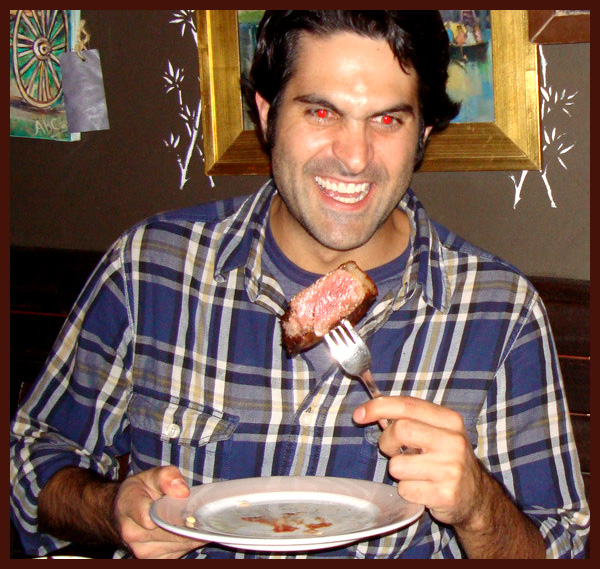
Every blog and tourist website you read has something to say about the steak here in Buenos Aires, mine included. The hype around steak in Argentina has been pumped up for years and tourists thrive on trying to put down a Bife de Chorizo the size of their heads. There is no doubt the carne here is amazing and the cuts and selection are much different from that in the States.
However, how much better quality is the beef in Argentina?
After sitting down with Yanqui Mike last week I’ve realized a lot has changed in Argentina in regards to the quality of meat that “your father or grandfather would recognize.”
Turns out, the majority of cows here in Argentina that supply the beef are being raised/grown the exact same way as they are in the United States, through Feedlots. Feedlots are basically rows of cows lined up along a feeding troth where they stay for the majority of their life in their own shit and all. They don’t move a lot because if they do they will burn fat and thus, take longer to grow and be sold. They eat grain or corn which is fattier than grass. They are also pumped with steroids to help them grow and antibiotics to keep them from getting sick.
In the past, (and still on Mike’s farm) cows were raised in grass fields where they were free to walk around and graze. However, this process takes too long for the turnover of profit and cattle ranchers have sacrificed the quality of meat through natural development for a more ‘efficient’ operation.
This was done a lot sooner in the States because chemicals made for the growth of cows (antibiotics & steroids) are made there. Thus, making them a lot cheaper and easier to buy then here in Argentina.
However, there are a few factors that have pushed the Argentine ranchers towards this method. For the past 7 years in Argentina there has been a major drought in the countryside. From 2003 until this past year farmers couldn’t supply enough grassland for their cows to grow at a substantial rate. So, many of them switched over to feedlots.
Many farmers are giving up a percentage of their grasslands (if not all) to plant soy. Not only is it highly profitable but it also takes a fraction of the amount of work.
Just recently a man from a big soy company came to Mike’s ranch to ask him to plant soy. Mike told me the guy gave him a offer he couldn’t refuse. It wasn’t Godfather style but he did offer him a guaranteed multi-year contract with thousands of dollars up front to plant soy on a small piece of his land. Against his “all-grass” organic ways, he did.
It’s crazy because people here in Argentina just assume all their steak is coming from a grass-feed operation because it has been for hundreds of years. It is to bad, but that just isn’t the case anymore. Mike’s cattle ranch is one of the few remaining here in the countryside of Buenos Aires. Like in the States, grass-fed beef is becoming more of a expensive boutique operation rather than the norm. You have to go to specialty markets, butcher shops or certain high-end restaurants to get it.
Interesting Beef Information:
- The USDA Beef Grading is based on inner muscular fat content. Not exactly how the cows were raised. They can pump a lot of steriods and chemicals into the cows to get fatter faster.
- Organic stamp costs a lot of money so even if someone is running a truly organic farm here in Argentina (or anywhere for that matter might) might not be able to afford the price for the piece of paper to hang in their window.
- Hamburgers: I will officially order my hamburgers more cooked than my steaks from now on. Mike pointed out that when hamburger is ground up the surface area is multiplied hundreds of times. Where at on a steak there are really only 2 surface areas (top and bottom). So, when you cook a steak you can sear it face on each side and essentially kill the majority of the germs. Where as in a hamburger you will have to cook it through to kill the germs that are throughout the burger. Also, hamburger meat usually comes from old un-milkable dairy cows.
- Kobe Beef and Kobe Bryant are both legit. I always thought the first was just an over-hyped marketing scheme by japanese beef farmers.
So, what does this all mean? Nothing really. I just thought it was interesting I’m going to still eat steak because I think it tastes great. I would like to say I could tell the difference between grass-fed and feedlot steaks but I really don’t know.
Have Questions about Beef? Comment below and Mike will respond.
Does this make you want to go Vegetarian? If so, Check this out.
A great article about the rise in beef prices in Argentina by The Argentimes

